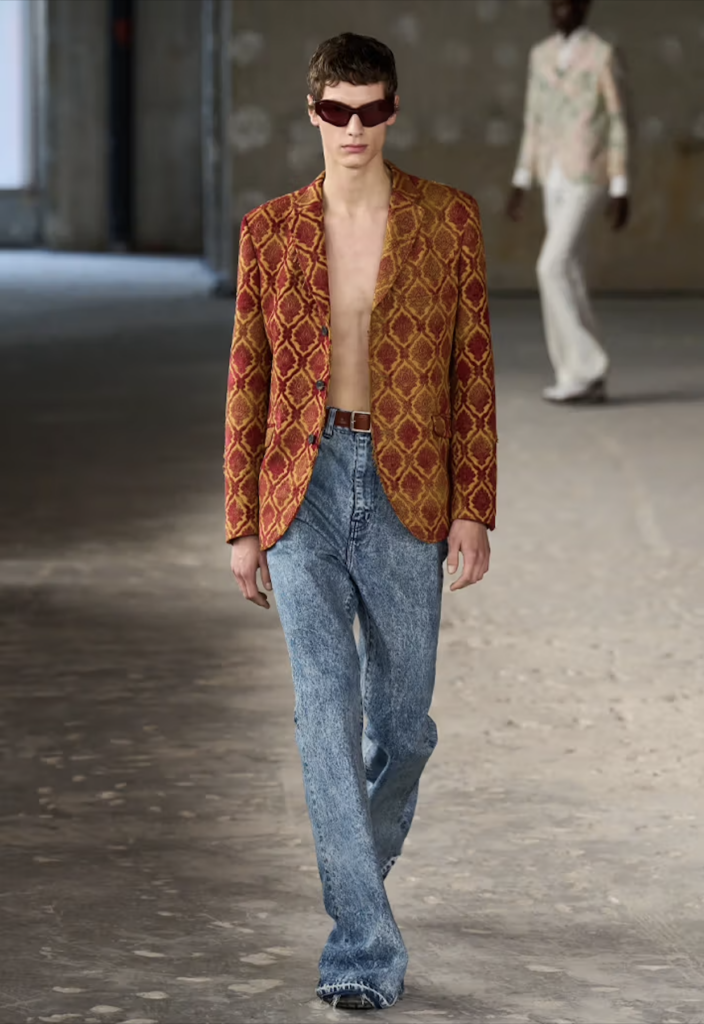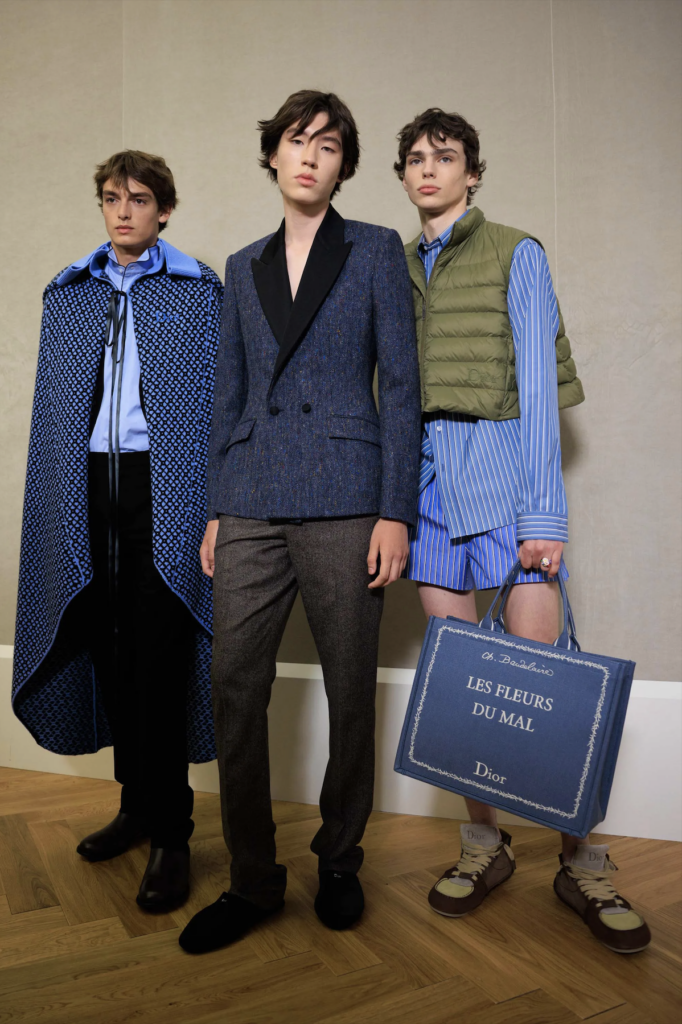News
Fashion, much like the world around it, has been in a state of flux. Designers have been shuffled from one house to another, some barely settling in before being replaced. The scramble over who lands where has started to feel more like a betting pit at a horse race than a measured industry shuffle. In this climate of uncertainty, Paris Fashion Week Spring/Summer 2026 delivered a series of responses that felt, on the whole, deeply personal. There was introspection and emotion, but also a return to measured joy. A return to dressing up, not as performance, but as connection. A kind of modern elegance emerged that felt ceremonial yet comfortable, refined yet fluid.
This season, designers pushed forward a version of elegance that was less about rigid codes and more about sensibility. At Dior, tailoring flowed rather than clenched. At Hed Mayner, oversized silhouettes draped the body with ease, creating quiet drama. And at Saint Laurent, draping and gathered waist trousers gave the impression of liminality with the garments suspended between structure and softness. There was a sense that dressing up no longer needed to mean dressing “like a man.” The lines between traditionally gendered clothing softened further, with many collections embracing a kind of romantic ambiguity where sensuality, softness, and strength all coexist. Across the board, gender felt like more of a suggestion than a definition.

That spirit of fluidity was most evident in the silhouettes. Liquid tailoring was everywhere. Long-line frock coats mixed with cargo pants, sheer shirts were worn under sharp blazers, and wide-legged trousers were paired with delicate knits. Designers like LGN, Comme des Garçons, and Willy Chavarria challenged familiar codes by playing with proportion, layering, and fabric. The result was a kind of modern dandyism, both bold and elegant. But this wasn’t costume, these looks were clearly meant to be lived in.
Another key thread was a return to craft, not in a nostalgic or romanticised sense, but as a quiet insistence on substance. From the woven leathers at Hermès to the antique-feeling jacquards at Junya Watanabe, texture and tactility took centre stage. These clothes felt made by hand, the fabrics, the stitching, the cuts all seem to hold memory. In an age of artificial intelligence and a domination of screens superseding personal interactions, the collections softly whispered: someone made this, someone touched this, someone put love into this, and that matters.

Colour played an important emotional role as well. While the foundation was grounded in earthy tones such as taupe, ivory, olive, and soft black, there were consistent bursts of joy. Vibrant colour waves cut through the calm like sunlight. It wasn’t maximalist, but it added a sense of optimism. The overall palette suggested restraint without repression, signalling that the mood was thoughtful, but never bleak. It was not quite the quiet luxury, though that undercurrent was very much present. Instead, it felt like considered and tempered joy.
Throughout the week, there was a reverence for the old world, but never a regression into it. Jonathan Anderson’s debut at Dior nodded to Christian Dior’s codes without being bound by them. Amiri’s world felt like a 1970s artist salon reimagined for the present day. Even at Hermès, always a bastion of restraint, there was a looseness. Woven leathers and buttery layers suggested a desire for breath and space. The past was there, but never as a crutch.

Spring/Summer 2026 in Paris reminded us that elegance is not escapist. It can be expressive, empowering, and even radical. In a moment when everything feels unstable, the act of dressing up thoughtfully, fluidly, and beautifully becomes its own form of resilience. Fashion gave us reason to show up again. Not as a performance but as a sense of self-fulfillment.